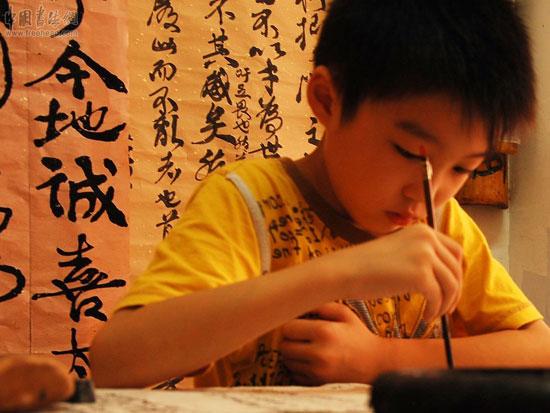Calligraphy has been part of Chinese culture for thousands of years. But how is it being preserved in today’s modern society? CCTV reporter Neela Eyunni looks at how teachers at a summer training camp in Beijing are inspiring Chinese young people to pick up their brushes.
For Yu Xiangyang calligraphy isn’t just an art form. The calligraphy master and instructor has made it her life’s work sharing what she calls an essential part of Chinese identity. Today she is teaching children at Beijing’s Cheng Jing Ren training camp.
Yu Xiangyang, Calligraphy Teacher, Beijing Cheng Jing Ren Training Camp, said, “Calligraphy has a long history in China and is deeply engrained in the culture. Learning it is an essential part of children’s education.”
14-year-old Chang Bilin has been studying calligraphy and honing his skills for the past 3 years.
Chang Bilin, Calligraphy Student, Beijing Cheng Jing Ren Training Camp, said, “I enjoy practicing calligraphy because it makes me feel really calm. It clears my mind and helps me think better.”
But while today’s class is full of young students eager to perfect this ancient art, calligraphy faces many obstacles in today’s modern society.
 |
| Youngsters uphold ancient art despite modern distractions |
Yu Xiangyang, Calligraphy Teacher, Beijing Cheng Jing Ren Training Camp, said, “Many children use the internet now and prefer to communicate digitally. They don’t want to handwrite characters and are less concerned with how they look on paper.
Furthermore, in today’s wired world many Chinese youths are choosing to play computer games and mobile apps over studying traditional art forms. But parents like Ling Xiaoqing say practicing calligraphy offers benefits that other hobbies do not and is more than just about learning to write characters.
Ling Xiaoqing, Parent, Beijing Cheng Jing Ren Training Camp, said, “My son has become much more relaxed since he started practicing calligraphy which has ultimately improved his studies. Writing calligraphy is also a lifelong skill that he will be able to use in the future.”
Calligraphy, like many traditional art forms, is now being threatened with distractions from modern technology. But with passionate teachers and classes like these, calligraphy continues to hold its place in the education and development of children in China.
We recommend:
